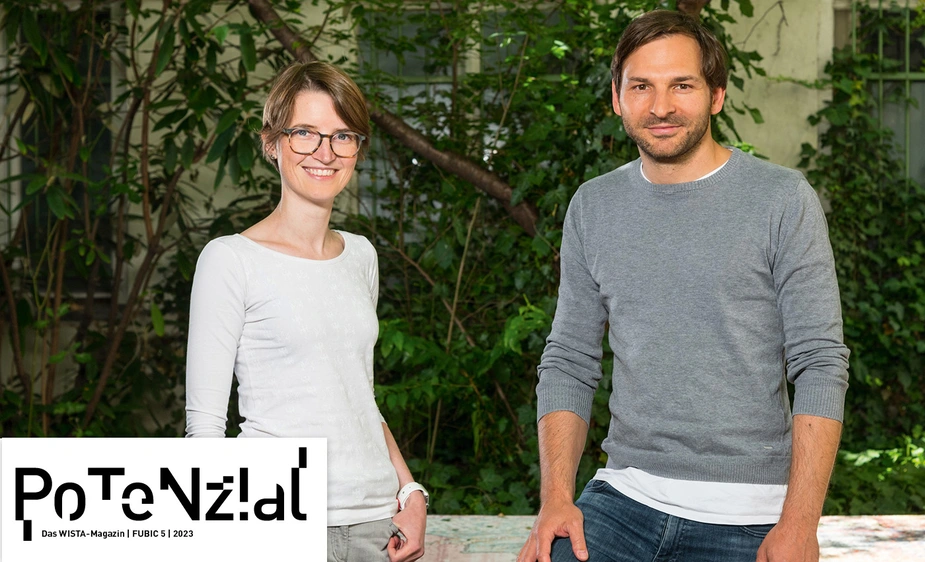Like being held by one’s parents
Benjamin Pardowitz and Maria Enge have developed something reminiscent of training wheels for children — not to help them ride a bike, however, but to help them walk
The mechanical engineer and the electrical engineer have been working together to realise their big dream since 2021. They want to enable children with physical challenges to be more active and enjoy moving and exercising more. It all began with the birth of Benjamin’s niece. She was born with cerebral palsy, the most common motor disability in childhood. To help these children move, they get a type of Zimmer frame. A walking chair with four wheels With this contraption, uneven ground becomes an obstacle. Mobility becomes restricted. “A drop kerb, a doorstep, or cobblestones – all these things then require a parent or caregiver to help move the children from A to B,” says Benjamin. “Walking on grass doesn’t work at all.” The engineer was not prepared to accept this. “I mean, autonomous driving is a reality now and these kids can’t cross the doorstep of a 19th-century residential building in Berlin because it’s a bit too high? It made me think that there must be a significantly more practical solution. And so, I built the prototype.”
The basic idea is as simple as it is genius: a combination of a Segway and a Zimmer frame. A frame with electrically powered wheels hangs behind the child, connected with a belt around the chest and the hips. “The trick is the steering,” says Benjamin. “The kids do not use a joystick or switch to control the speed. Instead, they control it with their intention movement.” This means that they use their upper body to indicate the direction they want to move in and the device follows them automatically. He was inspired by parents. “Parents usually hold their children upright from the back and automatically mirror their movements,” he says. “However, parents might do this for 30 minutes at a time before their backs start hurting and the children are put back in the wheelchair.” The support from the back has one great advantage. The children have their hands free. They can also get up and down, bend over to pet a dog, dig in the sand, and get back up on their own. “This is something that other walking aids haven’t been able to do,” says Benjamin proudly.
The first person he was able to convince with his idea was Maria Enge. They knew each other from symposia and conferences and had talked frequently about business ideas. “We never quite found something that would have made me quit my job,” says Maria. “But when Benjamin showed me the prototype for his niece, the decision was pretty clear to me. I wanted to help children to fulfil a basic need, give them more quality of life, and see them glow up when they walk all by themselves.”
This was in 2021. They both quit their jobs and got to work. “We started the project with funds from the Berlin Startup Scholarship and were supervised by Charité – Universitätsmedizin Berlin,” says Benjamin. “It was important to us to build something that has real medical added value for our target group.” Later, funding came from the EXIST Business Start-up Grant and, in 2022, they founded RooWalk. They move into an office of their own in the so-called “start-up villa” at Freie Universität Berlin. Very much in the style of a garage start-up, the prototype is still being tinkered on in their own four walls. This is about to change: “We are looking for workshop space to advance the development of our prototype,” says Benjamin. “Developing, certifying, and bringing to market a medical product takes a long time,” says Maria. “For this reason, funding is an important issue.”
Kai Dürfeld for POTENZIAL
